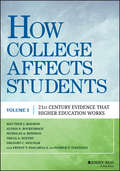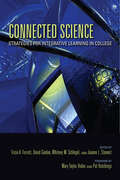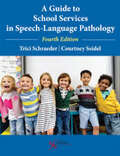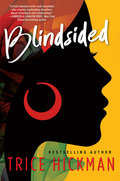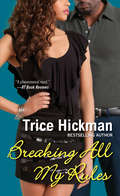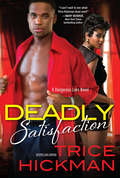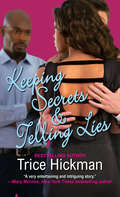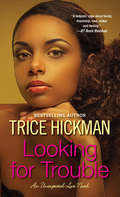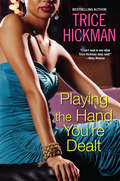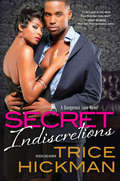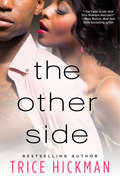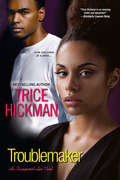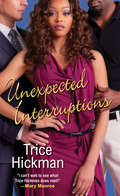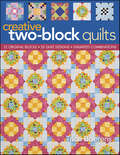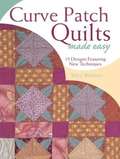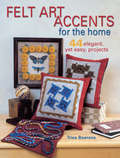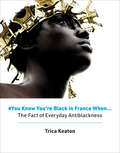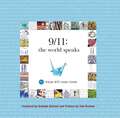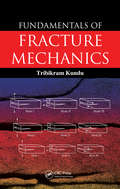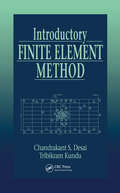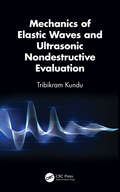- Table View
- List View
How College Affects Students: 21st Century Evidence that Higher Education Works
by Nicholas A. Bowman Matthew J. Mayhew Alyssa N. Rockenbach Tricia A. Seifert Gregory C. WolniakThe bestselling analysis of higher education's impact, updated with the latest data How College Affects Students synthesizes over 1,800 individual research investigations to provide a deeper understanding of how the undergraduate experience affects student populations. Volume 3 contains the findings accumulated between 2002 and 2013, covering diverse aspects of college impact, including cognitive and moral development, attitudes and values, psychosocial change, educational attainment, and the economic, career, and quality of life outcomes after college. Each chapter compares current findings with those of Volumes 1 and 2 (covering 1967 to 2001) and highlights the extent of agreement and disagreement in research findings over the past 45 years. The structure of each chapter allows readers to understand if and how college works and, of equal importance, for whom does it work. This book is an invaluable resource for administrators, faculty, policymakers, and student affairs practitioners, and provides key insight into the impact of their work. Higher education is under more intense scrutiny than ever before, and understanding its impact on students is critical for shaping the way forward. This book distills important research on a broad array of topics to provide a cohesive picture of student experiences and outcomes by: Reviewing a decade's worth of research; Comparing current findings with those of past decades; Examining a multifaceted analysis of higher education's impact; and Informing policy and practice with empirical evidence Amidst the current introspection and skepticism surrounding higher education, there is a massive body of research that must be synthesized to enhance understanding of college's effects. How College Affects Students compiles, organizes, and distills this information in one place, and makes it available to research and practitioner audiences; Volume 3 provides insight on the past decade, with the expert analysis characteristic of this seminal work.
Diagnosis of Endometrial Biopsies and Curettings: A Practical Approach
by Robert J. Kurman Tricia A. Murdock Michael T. Mazur Emanuela F.T. VerasDerived from the authors' long-running course presented at the International Academy of Pathology, this second edition, now with color illustrations, continues the tradition of its predecessor as being the concise and complete diagnostic guide to the endometrial biopsy. The text is structured so as to present a logical approach to formulating a pathologic diagnosis from the diverse array of tissue received in the surgical pathology laboratory. Color illustrations show typical artifacts and distortion, and explain their impact on diagnostic interpretation. Each chapter includes a section summarizing the features that must be discussed in the final pathology report.
Connected Science: Strategies for Integrative Learning in College (Scholarship Of Teaching And Learning Ser.)
by Tricia A. Ferrett, David R. Geelan, Whitney M. Schlegel, and Joanne L. StewartInformed by the scholarship of teaching and learning (SOTL), Connected Science presents a new approach to college science education for the 21st century. This interdisciplinary approach stresses integrative learning and pedagogies that engage students through open-ended inquiry, compelling real-world questions, and data-rich experiences. Faculty from a variety of disciplines and institutions present case studies based on research in the classroom, offering insights into student learning goals and best practices in curriculum design. Synthetic chapters bring together themes from the case studies, present an overview of the connected science approach, and identify strategies and future challenges to help move this work forward.
A Guide to School Services in Speech-Language Pathology
by Trici Schraeder Courtney SeidelA Guide to School Services in Speech-Language Pathology, Fourth Edition serves as a comprehensive textbook for school-based speech-language pathology (SLP) courses and college students who are ready to embark on their student teaching experiences. With its summaries of cutting-edge research, evidence-based clinical approaches, workload solutions, and strategies for professionalism, the book is also a useful resource for practicing, school-based SLPs. The text begins by providing a brief history of school-based SLP services. It highlights the legal mandates set forth in the Individuals with Disabilities Education Improvement Act; provides a review of the No Child Left Behind Act; offers new information about the Every Student Succeeds Act and the Americans with Disabilities Act; and summarizes court cases that have influenced and shaped school services. Then, the text delves into a description of service delivery models; provides valuable information about a workload analysis approach to caseload standards in schools; offers examples of how to write IEPs that reflect workload solutions; shares examples of implementation strategies; and offers concrete, real-life workload success stories. In addition, this text provides practical strategies for using evidence-based practice, proactive behavior management, conflict resolution, professional collaboration, conferencing and counseling skills, cultural competencies, goal writing, informal assessment procedures, and testing accommodations, including methods for conducting assessments for dual language learners. The final chapter provides the evidence base for links between language, literacy, and the achievement of school standards. This chapter is a must-read for every school SLP.
4G: Managing Critical Decisions in Deployment of 4G/LTE Networks and their Effects on Network Operations and Business
by Trichy Venkataraman Krishnamurthy Rajaneesh ShettyAs telecommunications operators and network engineers understand, specific operational requirements drive early network architectural and design decisions for 4G networks. But they also know that because technology, standards, usage practices, and regulatory regimes change on a continuous basis, so do best practices. 4G: Deployment Strategies and Operational Implications helps you stay up to date by providing the latest innovative and strategic thinking on 4G and LTE deployments. It evaluates specific design and deployment options in depth and offers roadmap evolution strategies for LTE network business development. Fortunately, as you''ll discover in this book, LTE is a robust and flexible standard for 4G communications. Operators developing 4G deployment strategies have many options, but they must consider the tradeoffs among them in order to maximize the return on investment for LTE networks. This book will show operators how to develop detailed but flexible deployment road maps incorporating business requirements while allowing the agility that expected and unexpected network evolution require. Such road maps help you avoid costly redeployment while leveraging profitable traffic. Telecommunications experts and authors Trichy Venkataraman Krishnamurthy and Rajaneesh Shetty examine various architectural options provided by the flexibility of LTE and their effect on the general current and future capability of the designed network. They examine specific features of the network, while covering specific architectural deployment strategies through example and then assessing their implications on both near- and long-term operations as well as potential evolutionary paths. Besides helping you understand and communicate network upgrade and architectural evolution road maps (with options), you will learn: How to plan for accessibility, retainability, integrity, availability, and mobility How to balance loads effectively How to manage the constraints arising from regulation and standardization How to manage the many disruptive factors affecting LTE networks 4G: Deployment Strategies and Operational Implications also outlines specific network strategies, which network features and deployment strategies support those strategies, and the trade-offs in business models depending on the strategies chosen. Best of all you will learn a process for proactive management of network road map evolution, ensuring that your network--and your skills--remain robust and relevant as the telecommunications landscape changes. What you''ll learn The relationships between network options, deployment strategies, network strategies, network road maps and operator business models. The process of developing and evolving strategies and roadmaps with a targeted operational model in mind. Ways to ensure maximum deployment flexibility to respond to changes in the operational model which might be forced by changing market conditions, usage models, or technological developments How to overcome 4G deployment challenges including equipment failure, spectrum interference, regulatory delays, and more How to ensure network resilience Who this book is for This book targets architectural, engineering and operational executives in the operator community as well as the network development contractors they employ to analyze, propose, design and in some cases operate their networks. Table of Contents 1. Network Planning 2. Self-Organizing Networks in LTE Deployment 3. Deployment Challenges in Evolving 4G 4. Network Roadmaps 5. Network Roadmap Evolution 6. A Process for Network Roadmap Evolution
Blindsided
by Trice HickmanIn this edgy, sexy,page-turning follow-up to award-winning, bestselling author Trice Hickman&’s The Other Side, three friends who&’ve shared everything—including the same birthday—bond over the triumphs, trials, and unexpected complications surrounding the men they love . . . Formerly single, D.C. businesswoman Bernadette Gibson is amazed at what a difference a year makes. Now in a committed relationship with a man who cherishes her, the practical fifty-something is thrilled with the laid-back peace and promise of her new southern small-town life. But when she discovers she's pregnant, complications she never saw coming will cause her to question everything . . . Fortyish bestselling novelist Testimony &“Tess&” Sinclair couldn&’t be happier with her engagement to successful restaurateur, Maceo Dennis. But he longs to have children, and Tess fears to tell him her real story—she has difficulty conceiving. Once she reveals the truth, will they be strong enough to survive heartbreak they never bargained for? . . . Married to the almost-perfect love of her life—it's a dream-come-true for outgoing makeup artist Arizona Mays. She hopes that the deep connection between her and her hot new husband, Chris Pendleton, will lead him to work out his intimacy problems in the bedroom. But when her past and his secrets collide, their happily-ever-after faces irreparable disaster . . . Now as Bernadette, Tess, and Arizona face the biggest challenges of their lives, these three best friends must rely more than ever on their sisterhood bond—and irrepressible differences—to confront hard truths, handle the damage done,and at last secure the happiness they&’ve always wanted . . .
Breaking All My Rules
by Trice HickmanBorn into wealth, Erica Stanford has followed in her family's successful footsteps and now runs her own upscale boutique in an affluent Washington, D.C., neighborhood. But despite her good fortune, she's still missing someone special to share her life with—until a chance encounter changes everything...Handsome, rugged Jerome Kimbrough is hard to miss among the fellow citizens serving jury duty with Erica. And as the two get to know each other over the course of a two-week trial, their relationship soon turns into a passionate romance. Although they come from opposite worlds—Jerome is a blue-collar, city sanitation employee—they’re both hard working dreamers with big ambitions. Yet while their differences aren't an issue for them, their friends, family—and Erica's ex-fiancé—disagree. As all involved are forced to confront their hidden stereotypes, can Erica and Jerome endure the challenges in store for them—including a startling secret that could destroy it all?…
Deadly Satisfaction (A Dangerous Love Novel #2)
by Trice Hickman“Hickman proves to be a master of suspense, plot twists, exhilaration and killer climaxes.” —RT Book Reviews, 4.5 Stars Top Pick It’s been two years since Johnny Mayfield’s murder rocked Amber, Alabama. His death, along with the illicit personal scandals that preceded it, created more drama than the town had ever seen. But now life is back to normal, at least for his widow, Geneva. Or so it seems. Happily remarried, Geneva has to admit her life is better than ever. Her upscale salon is thriving, and she finally has the baby she always wanted. But when Vivana Jackson, Johnny’s ex-lover and the woman convicted of killing him, starts stirring up drama by claiming she’s been framed, it causes Geneva to question many things—including who really killed Johnny. Add local gossip columnist Shartell Brown and tell-it-like-it-is Donetta Pierce to the mix, and soon vicious rumors, terrifying threats, and long held secrets may add up to another shocking murder—one that will rival even Johnny Mayfield’s. “Readers will enjoy the twist and turns in Hickman’s tale, which has a definite soap opera vibe. We know there’s aromantic train wreck ahead, but we can’t turn away from the drama.”—Library Journal on Secret Indiscretions
Keeping Secrets & Telling Lies (An Unexpected Love Novel #2)
by Trice HickmanA very entertaining and intriguing story. --Mary Monroe, New York Times bestselling author Some secrets set you free. Some destroy your world. After six years of marriage, Victoria and Ted are the ultimate power couple. She's a beautiful, business savvy sister who owns one of Atlanta's hottest event planning companies. He's a blue-eyed CEO who knows how to take care of business in and out of the boardroom. But their happy life quickly unravels when long held desires and decades-old secrets come back to haunt them. It starts when Parker Brightwood re-enters Victoria's life. She thought she'd gotten over the handsome surgeon who once stole her heart, but unusual circumstances bring the ebony prince back on the scene--and now he's determined to win her at any cost. Ted's undoing begins with his mother's sudden death and a shocking revelation that threatens the life and marriage he treasures. Facing a road filled with uncertainty, can Victoria and Ted repair the damage done by secrets and lies before it's too late? "Hickman hits all the high notes in this charming modern romance where love and loyalty trump race." –Publishers Weekly (starred review) on Unexpected Interruptions
Looking for Trouble (An Unexpected Love Novel #3)
by Trice HickmanEven the power of prophecy can&’t always predict the future for two former lovers in this romance by the author of Keeping Secrets & Telling Lies. John Small may be a successful Wall Street banker, but at heart he&’s a country boy from the sleepy town of Nedine, South Carolina. John wants to open Nedine&’s first black-owned bank. But big dreams can bring big problems—and John&’s snooty New York City girlfriend is just the beginning. John is about to learn some hard truths about money, power, love, and loyalty. And when his future and his family&’s legacy are in danger, help will come from where he least expects it… Alexandria Thornton is a hard-working corporate attorney by day but she&’s passionately pursuing her dream as a spoken word artist by night. Frustrated with her career and her lackluster love life, Alexandria&’s ready to throw in the towel on both—that is, until a man from her past reenters her life and changes everything. But her newfound happiness is short-lived when old lovers, lingering secrets, and hidden desires threaten to end it all…Praise for Trice Hickman and the Unexpected Love series &“Trice Hickman is an amazing writer and storyteller!&”—Kimberla Lawson Roby, New York Times–bestselling author of Here and Now &“A fantastic saga about family, friendship, love, status, and destiny.&”—RT Book Reviews
Playing the Hand You're Dealt
by Trice Hickman"I can't wait to see what Trice Hickman does next!" --Mary Monroe "Trice Hickman is an amazing writer and storyteller!" --Kimberla Lawson RobyEveryone in Emily Eloise Snow's Atlanta, Georgia, hometown knows her as a sweet young woman who always does what's right. But when Emily's beloved mother dies, her quiet life is shaken to its core, leaving her devastated--and ready for a fresh start. Encouraged by her bolder, wilder best friend, Samantha, Emily moves to Washington, D.C. Samantha is sure D.C. will bring Emily her heart's desire. But that's exactly what Emily is afraid of. . .Since she was eighteen, Emily has fought a fierce longing even Samantha doesn't know about--a love for a man that would break just about every rule she was taught to follow. Now, each step closer to D.C. is a step closer to him--and a sizzling, forbidden passion that could destroy not just her life as she knows it, but the image of the woman, and the friend, everyone believes her to be. . ."Another wonderful, emotionally-charged page-turner by Trice Hickman." –Urban Reviews"Will keep you guessing straight through to the explosive ending." –Victoria Christopher Murray"Unforgettable characters and a page-turning storyline."--Lutishia Lovely
Secret Indiscretions (A Dangerous Love Novel #1)
by Trice HickmanTwo couples, two unhappy spouses—one shocking solution… Five years into her happy marriage, Geneva Mayfield is devastated to find that things have taken a turn. Her husband, Johnny, is suddenly hard to reach, distant, and works late too often for Geneva not to be suspicious. Is it because she’s been pressuring him about having a baby? Feeling lonely and neglected, Geneva bonds with Samuel Owens, a colleague who is having marital trouble of his own. Soon, their relationship blossoms into an uncontrollable affair. Bored with her husband, Samuel, and dead set against having a child with him, Vivana Owens is biding her time until she’s ready to leave—and she’s spending it with Johnny Mayfield. It’s just a fling—until Vivana becomes obsessed with Johnny, especially once he tries to win back his wife. But affairs don’t end easy—and soon one of the unfaithfuls will end up dead, one will end up in jail, and one just might get away with murder… “Readers will enjoy the twist and turns in Hickman’s tale, which has a definite soap opera vibe.” —Library Journal
The Other Side
by Trice Hickman“Hickman proves to be a master of suspense, plot twists, exhilaration and killer climaxes.” —RT Book Reviews, 4.5 Stars Top Pick After one too many failed relationships, businesswoman Bernadette Gibson is resigned to singlehood. Yet on the heels of her fiftieth birthday she meets Cooper “Coop” Dennis, a charismatic nightclub owner who literally sweeps her off her feet. But just as they’re ready to make the ultimate commitment, a secret from Coop’s past threatens to end their relationship . . . As her fortieth birthday approaches, bestselling novelist Testimony “Tess” Sinclair is hurting—especially since her ex-boyfriend got married. For a change of scenery she travels to the sleepy southern town of Bourbon, NC, to visit her cousin, Bernadette—and finds unexpected love. Yet as wedding bells promise to ring, Tess wrestles with a secret that could end their happily ever after before it begins . . . Up-and-coming makeup artist and single mom Arizona May is thrilled to be just a few months away from marrying the love of her life. Until then, she and her fiancé are committed to celibacy. But on the eve of Arizona’s thirtieth birthday, they surrender to passion—and she discovers something about her Prince Charming that leads her to rethink their plans . . . As Bernadette, Tess, and Arizona strive to find happiness, they develop a bond that strengthens and surprises them—and carries them through their struggles, to the other side. “Readers will enjoy the twist and turns in Hickman’s tale, which has a definite soap opera vibe. We know there’s a romantic train wreck ahead, but we can’t turn away from the drama.”—Library Journal on Secret Indiscretions
Troublemaker (An Unexpected Love Novel #4)
by Trice Hickman"Trice Hickman is an amazing writer and storyteller!" --Kimberla Lawson RobyEvery joy has its challenges… After twenty years, childhood best friends Alexandria Thornton and PJ Brightwood have reunited—and fallen in love. Alex’s artistic nature as a spoken word artist, and PJ’s success as a talented surgeon promise a bright future. But their happiness brings unexpected complications for those they care about most… A devoted wife, loving mother, and successful businesswoman, Victoria Thornton is a pillar of her suburban Atlanta community. But when her daughter, Alexandria, becomes engaged to the son of Victoria’s former lover, her past mistake threatens her orderly life. As the impending marriage reunites both families, it reignites old feelings that test all of their relationships—and all of their boundaries… “I can't wait to see what Trice Hickman does next!” —Mary MonroePraise for the Unexpected Love series"Looking for Trouble is a fantastic saga about family, friendship, love, status and destiny." --RT Book Reviews"A humorous and entertaining novel." --Urban Reviews on Keeping Secrets & Telling Lies"Hickman hits all the high notes in this charming modern romance where love and loyalty trump race." –Publishers Weekly (starred review) on Unexpected Interruptions
Unexpected Interruptions (An Unexpected Love Novel #1)
by Trice HickmanA successful career woman looking to settle down is torn between two very different men in this romance by the author of The Other Side. Smart, sexy Victoria Small has come to the end of her year off—from men, that is. She&’s enjoyed her hiatus, the peace, quiet—and no unexpected interruptions. But now she&’s ready to have someone to come home to. And her timing is perfect, as not one, but two, handsome possibilities enter her life… Ted, a powerful, blue-eyed CEO sends a thrill of excitement through her that shocks Victoria out of her comfort zone. Meanwhile, Parker, a talented surgeon, melts her defenses with his warmth and ebony good looks. The men are as different as can be—inside and out—but they have one thing in common: they both want Victoria. And as she struggles to decide what—and who—she really wants, Victoria will have to face her deepest fears, secrets, and desires—and decide if she&’s brave enough for true love, no matter what color it comes in. Her answer just may surprise everyone, including herself… Praise for Unexpected Interruptions&“Hickman hits all the high notes in this charming modern romance where love and loyalty trump race.&”—Publishers Weekly, starred review
Creative Two Block Quilts
by Trice BoerensMix-and-Match Quilt Magic • 12 original pieced blocks can be combined to make 20 glorious two-block quilt designs • Mix and match the blocks into your own designs, too! • Each block comes with complete assembly instructions • Quilts include 6 completed models and 14 alternate combinations You've never seen pieced blocks quite like these original creations from award-winning designer Trice Boerens. Use them to make any of Trice's 20 two-block quilt designs, or combine them in your own favorite ways. The possibilities are endless!
Curve Patch Quilts made easy
by Trice BoerensThis creative approach to quilting involves adding curved seams to the traditional quilt, allowing for endless design possibilities. Expert quilter Trice Boerens leads readers through the traditional curve patch quilt and explores the multitude of possibilities this technique can offer. New techniques are introduced to make curve patch sewing easier and faster, with instruction on how to make accurate templates, clip concave curves, and match raw edges. Quilters will follow step-by-step instructions and pattern for 15 beautiful curve patch quilts in themes such as Hearts and Flowers, Blowing in the Wing, Made-to-Order Borders and Four Seasons.
Felt Art Accents for the Home: 44 Elegant, Yet Easy, Projects
by Trice BoerensFelt... it's not just for kid's crafts anymore! Gone are the days when felt was only used with pipe cleaners and glitter. Now it comes in a great array of colors, textures, weights, and blends suitable for many adult-crafting applications. Well-known designer Trice Boerens shows readers how to turn this inexpensive craft medium into sophisticated projects. Using techniques such as embroidery, applique, and stenciling, Boerens presents more than 40 projects to decorate the home with style. Pillows, table runners, photo frames, and more come to life through step-by-step instructions and lavish photography.
#You Know You're Black in France When: The Fact of Everyday Antiblackness
by Trica KeatonA groundbreaking study about everyday antiblackness and its refusal in an officially raceblind France.What does it mean to be racialized-as-black in France on a daily basis? #You Know You&’re Black in France When… responds to that question. Under the banner of universalism, France messages a powerful and seductive ideology of blindness to race that disappears blackened people and the antiblackness they experience. As Tricia Keaton notes, in everyday life, France is anything but raceblind. In this interdisciplinary study, drawn from a range of critical scholarship including that of Philomena Essed and Frantz Fanon, Keaton illuminates how b/Black (racialized/politicized) French people distinctly expose and refuse what she calls &“raceblind republicanism.&” By officially turning a blind eye to the specificity of antiblackness, the French state in fact perpetuates it, she argues, along with structural racism. Through daily life, public policies, visual culture, the private lives of individuals and families shattered by police violence, the French courts where many are fighting back, and her own experiences, Keaton charts the troubling dynamics and continuities of antiblackness in French society.
9/11: The World Speaks
by Tribute WTC Visitor Center Lee Ielpi Meriam LobelAlmost two million people from across the United States and around the world have come through the museum galleries of the Tribute WTC Visitor Center since it opened in September 2006 right across the street from the World Trade Center site. Many of these visitors have written their poignant reflections about the impact of September 11th on visitor cards that are collected in the Center&’s final gallery. To date, the Center has collected 200,000 cards written in 48 languages by people from 120 countries.For the first time ever, this book brings together a choice selection of these cards, many of which talk about the inspiration people find in the outpouring of humanity in response to September 11th. In seeing the selflessness of first responders and ordinary citizens who rushed to help strangers and friends on that day, and in the many months of recovery that followed, adults and young people write that they have been inspired to help others in their communities and around the world.Moving us toward the future with empathy and hope, 9/11: The World Speaks is a remarkable collection of cards that include elaborate drawings, stories of personal experiences on September 11th, notes written by family members of victims, and statements by people of all cultural backgrounds decrying the use of violence. The book also features a preface from Tom Brokaw.
Earthquake Resistant Design, Protection, and Performance Assessment in Earthquake Engineering (Geotechnical, Geological and Earthquake Engineering #54)
by Tribikram Kundu Halûk Sucuoğlu Mustafa Erdik Azer Kasimzade Paolo ClementeThis book covers the latest advances in the popular research areas in Earthquake Engineering: Seismic Protection, Non-Destructive Testing and Structural Health Monitoring, as well as Seismic Performance Assessment. Part I includes seven chapters on seismic protection systems, a new passive isolation system for tower structures, frictional base isolation systems, period changeable isolation systems and presented applications, and recent developments in Italy, Japan and Macedonia. Also, particularities of design basis ground motion for long period structures are explained. Soil-Structure interaction models on the relevant subject are presented by classifying them. Part II presents three chapters on the new developments on Non-Destructive Testing (NDT) and Structural Health Monitoring (SHM) for Performance Assessment of Structures. Applications and recent developments in USA, Canada, and Turkey are presented. Part III includes eight chapters on Seismic Performance Assessment. The subject of this part is presented on its following important components, and results are discussed: New criterion on performance based seismic design with application to a high-rise building; seismic design and performance assessment of a super tall concrete core wall building; seismic design and evaluation of high-performance modular tall timber building; challenges to detailed finite element analysis of entire building structures; seismic performance evaluation of traditional Japanese wooden houses with outer-frame reinforcement; dynamic response of pipeline, subjected to subsurface and surface blast explosion; bond behavior of sand-coated CFRP rebar embedded in concrete are given; seismic resistant large-span shell structures are presented. The book presents a concise summary of latest research findings, and will be of interest to a wide range of professionals in earthquake engineering, including graduate students, instructors, designers, and researches.
Fundamentals of Fracture Mechanics
by Tribikram KunduAlmost all books available on fracture mechanics cover the majority of topics presented in this book, and often much, much more. While great as references, this makes teaching from them more difficult because the materials are not typically presented in the order that most professors cover them in their lectures and more than half the information p
Introductory Finite Element Method (Mechanical and Aerospace Engineering Series)
by Tribikram Kundu Chandrakant S. DesaiAlthough there are many books on the finite element method (FEM) on the market, very few present its basic formulation in a simple, unified manner. Furthermore, many of the available texts address either only structure-related problems or only fluid or heat-flow problems, and those that explore both do so at an advanced level.Introductory Finite Element Method examines both structural analysis and flow (heat and fluid) applications in a presentation specifically designed for upper-level undergraduate and beginning graduate students, both within and outside of the engineering disciplines. It includes a chapter on variational calculus, clearly presented to show how the functionals for structural analysis and flow problems are formulated. The authors provide both one- and two-dimensional finite element codes and a wide range of examples and exercises. The exercises include some simpler ones to solve by hand calculation-this allows readers to understand the theory and assimilate the details of the steps in formulating computer implementations of the method.Anyone interested in learning to solve boundary value problems numerically deserves a straightforward and practical introduction to the powerful FEM. Its clear, simplified presentation and attention to both flow and structural problems make Introductory Finite Element Method the ideal gateway to using the FEM in a variety of applications.
Mechanics of Elastic Waves and Ultrasonic Nondestructive Evaluation
by Tribikram KunduSummary:This book presents necessary background knowledge on mechanics to understand and analyze elastic wave propagation in solids and fluids. This knowledge is necessary for elastic wave propagation modeling and for interpreting experimental data generated during ultrasonic nondestructive testing and evaluation (NDT&E). The book covers both linear and nonlinear analyses of ultrasonic NDT&E techniques. The materials presented here also include some exercise problems and solution manual. Therefore, this book can serve as a textbook or reference book for a graduate level course on elastic waves and/or ultrasonic nondestructive evaluation. It will be also useful for instructors who are interested in designing short courses on elastic wave propagation in solids or NDT&E. <P><P>The materials covered in the first two chapters provide the fundamental knowledge on linear mechanics of deformable solids while Chapter 4 covers nonlinear mechanics. Thus, both linear and nonlinear ultrasonic techniques are covered here. Nonlinear ultrasonic techniques are becoming more popular in recent years for detecting very small defects and damages. However, this topic is hardly covered in currently available textbooks. Researchers mostly rely on published research papers and research monographs to learn about nonlinear ultrasonic techniques. Chapter 3 describes elastic wave propagation modeling techniques using DPSM. Chapter 5 is dedicated to an important and very active research field – acoustic source localization – that is essential for structural health monitoring and for localizing crack and other type of damage initiation regions. <P><P>Features <li> Introduces Linear and Nonlinear ultrasonic techniques in a single book. <li>Commences with basic definitions of displacement, displacement gradient, traction and stress. <li> Provides step by step derivations of fundamental equations of mechanics as well as linear and nonlinear wave propagation analysis. <li> Discusses basic theory in addition to providing detailed NDE applications.• <li>Provides extensive example and exercise problems along with an extensive solutions manual.
Nonlinear Ultrasonic and Vibro-Acoustical Techniques for Nondestructive Evaluation
by Tribikram KunduThis multi-contributed volume provides a practical, applications-focused introduction to nonlinear acoustical techniques for nondestructive evaluation. Compared to linear techniques, nonlinear acoustical/ultrasonic techniques are much more sensitive to micro-cracks and other types of small distributed damages. Most materials and structures exhibit nonlinear behavior due to the formation of dislocation and micro-cracks from fatigue or other types of repetitive loadings well before detectable macro-cracks are formed. Nondestructive evaluation (NDE) tools that have been developed based on nonlinear acoustical techniques are capable of providing early warnings about the possibility of structural failure before detectable macro-cracks are formed. This book presents the full range of nonlinear acoustical techniques used today for NDE. The expert chapters cover both theoretical and experimental aspects, but always with an eye towards applications. Unlike other titles currently available, which treat nonlinearity as a physics problem and focus on different analytical derivations, the present volume emphasizes NDE applications over detailed analytical derivations. The introductory chapter presents the fundamentals in a manner accessible to anyone with an undergraduate degree in Engineering or Physics and equips the reader with all of the necessary background to understand the remaining chapters. This self-contained volume will be a valuable reference to graduate students through practising researchers in Engineering, Materials Science, and Physics.Represents the first book on nonlinear acoustical techniques for NDE applicationsEmphasizes applications of nonlinear acoustical techniquesPresents the fundamental physics and mathematics behind nonlinear acoustical phenomenon in a simple, easily understood mannerCovers a variety of popular NDE techniques based on nonlinear acoustics in a single volume
